by Steve Selden | May 13, 2015 | Conservation
Animals all over the Earth on land and within its oceans have evolved with some type of amazing camouflage or survival disguise in order to further exist in the wild. Many of these adaptations are intricate patterns or color shades that enable the living being to blend in with barely a trace of detection by predators.
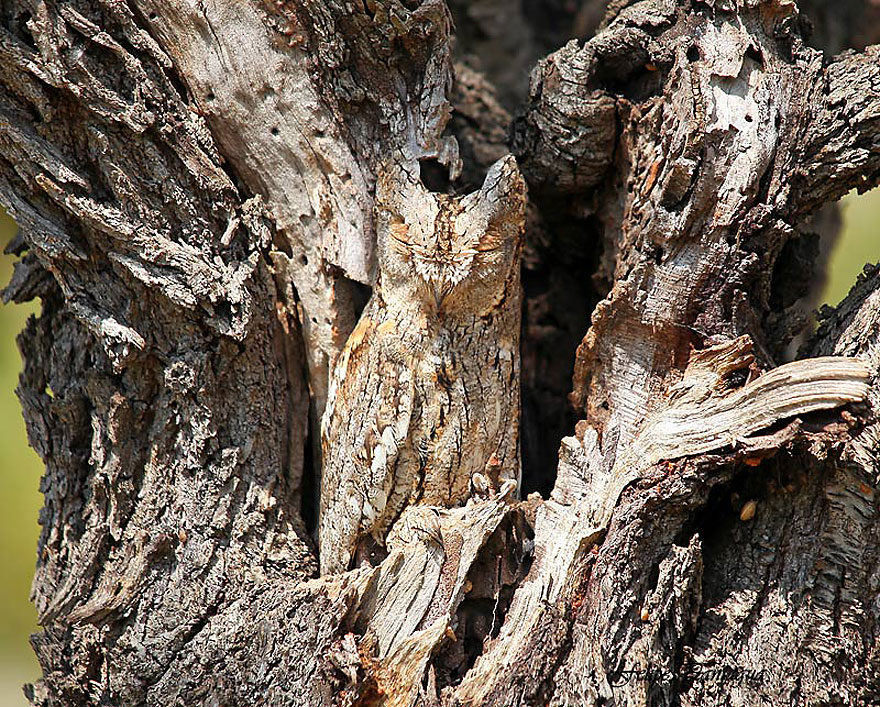
Owl blending perfectly in with a tree. Eoiarucasadvancedone.blogspot photo.
Camouflage in animals tends to adhere to three factors regarding environment. Blending in and becoming one with the environment is most common in nature. Behavior and physiology of the animal, relating to the behavior of the predator. And lastly, the environment in which the animal lives and hunts its food.
Since animal camouflage is genetically determined, each new generation adapts to it environmental features a little better. most animals mimic the habitat’s coloration and features and take on some representation in their appearance for disguise. Some species are able to change those features as needed through biological means. Chameleons obviously come to mind in this regard. Birds and some furred animals also adjust by shedding or molting and growing different colored coats seasonally.
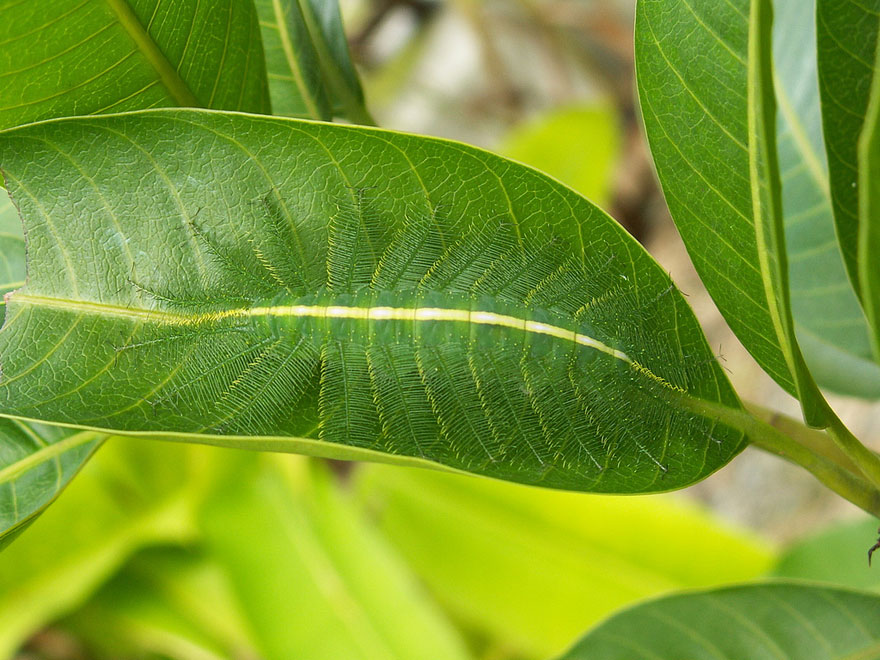
Common baron caterpillar blending into a leaf. Wohinauswandern photo.
Animals also use camouflage in groups or herds. Zebras blend their individual stripes together and appear as a larger mass to dissuade would be predators like lions. Tropical fish utilize this tactic as well by forming huge schools as protection. See kids… another reason to stay in school.

Polar bear using white to blend in. Natural Habitat Adventures photo.
Polar bears and Arctic animals use white as their camouflage. Polar bears are obviously a larger animal that has few predators besides humans. Therefore, blending in for them is a matter of disguising for predatory reasons. In essence, sneaking up on seals on white ice is the advantage gained. Other Arctic animals such as Arctic fox, Arctic hares, ptarmigan and beluga whales all need that white on white for protection from predators in the wild.

Willow ptarmigan becoming one with the snowy tundra. Art Wolfe photo.
by Steve Selden | Jan 2, 2015 | Churchill News
Churchill is known worldwide at the best, most accessible place to see polar bears. Now, if you’ve spent much time in this northern Manitoba outpost town you know there’s much more than the “king” of the Arctic. In fact, often it’s the other animals of this remote land on the shores of the Hudson Bay that give travelers thrills. The unexpected often can be as exciting as seeing the main event.

Polar bear in the willows in Churchill. Eric rock photo.
Here are five other animal attractions around Churchill you could see during polar bear season and possibly other times of the year.
1. Arctic Fox– This icon of the Arctic is one of the most beautiful animals in the north. To some extent the white fox symbolizes the Arctic as much as the mighty polar bear. the population tends to run in cycles and fluctuates with the lemming population and will compete from year to year with the red fox.
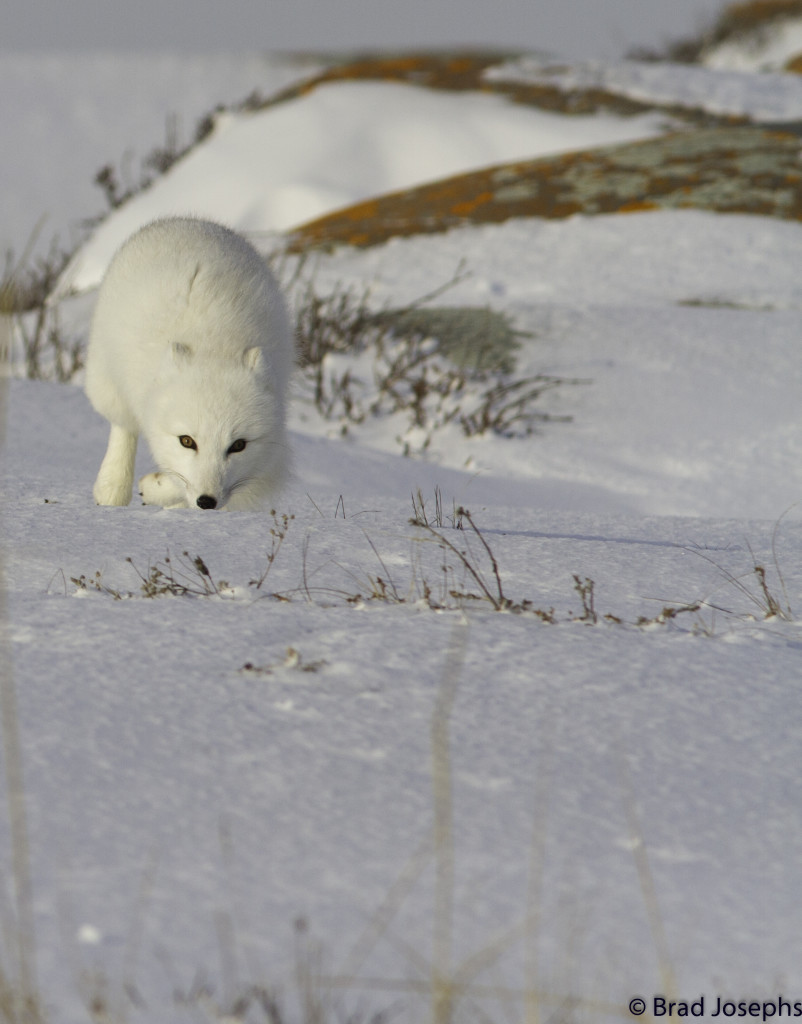
Arctic fox sniffing the tundra for prey. Brad Josephs photo.
2. Moose– Usually individual moose can be seen from a polar rover or from a helicopter journey over the vast tundra.
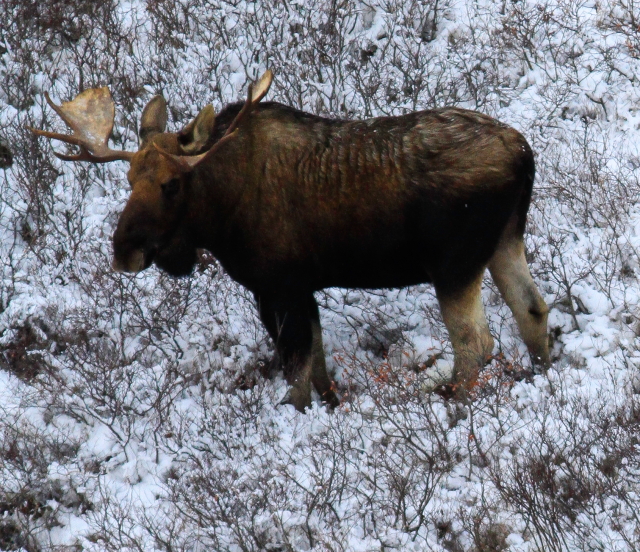
A moose on the tundra. Brad Josephs photo.
3.- Red fox– The “other’ fox in the Arctic has been increasing its range of habitat over the years and even foraging seal-kills out on the Hudson Bay ice pack. The red fox numbers fluctuate from year to year…highly dependent on lemming numbers.
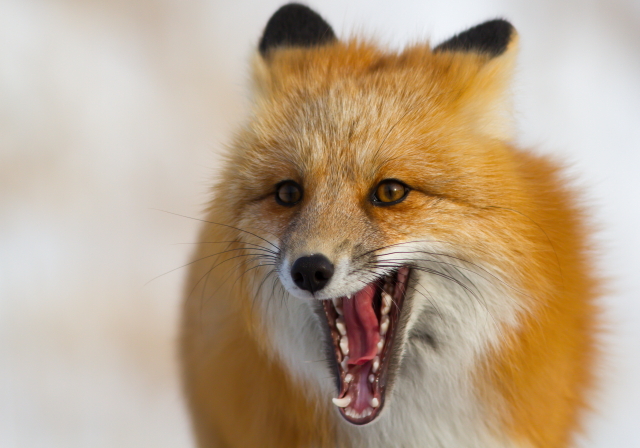
Red fox along the coast in Churchill,MB. Brad Josephs photo.
4. Beluga Whale– Although you will not see this whale during polar bear season, you could see polar bears during whale season which can extend until late August and even early September.
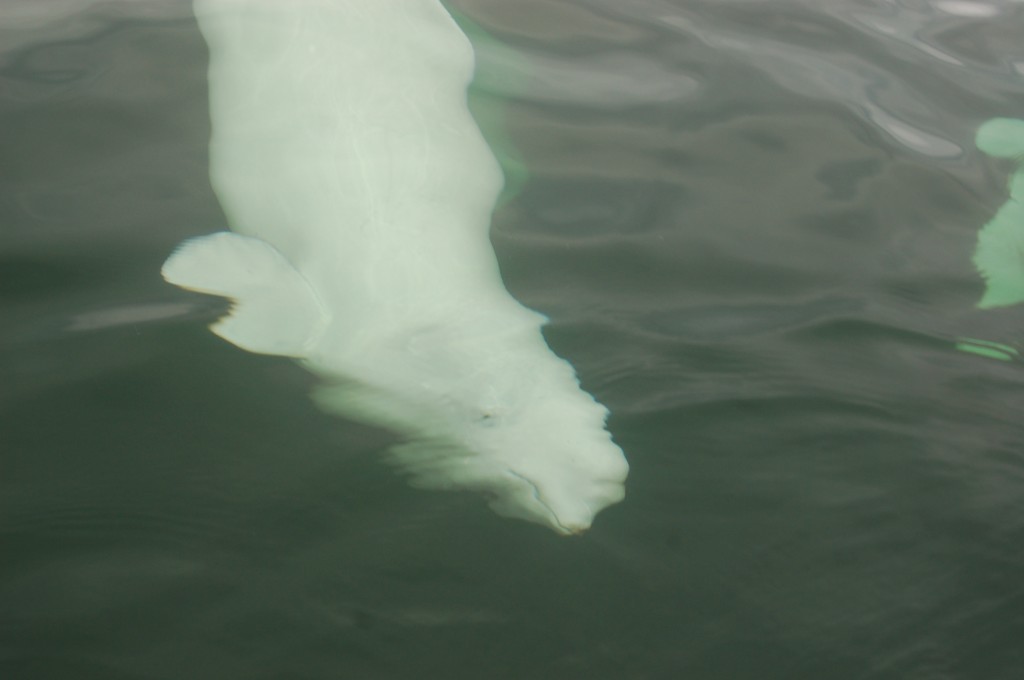
Beluga whale in the mouth of the Churchill River. Photo-Steve Selden
5. Killer Whale (Orca)- A very rare sight in the Hudson Bay. Occasionally these leviathans surface in areas where they can be seen, usually just outside the mouth of the Churchill River. If you are lucky enough to see one the chances of getting a photo are slim.
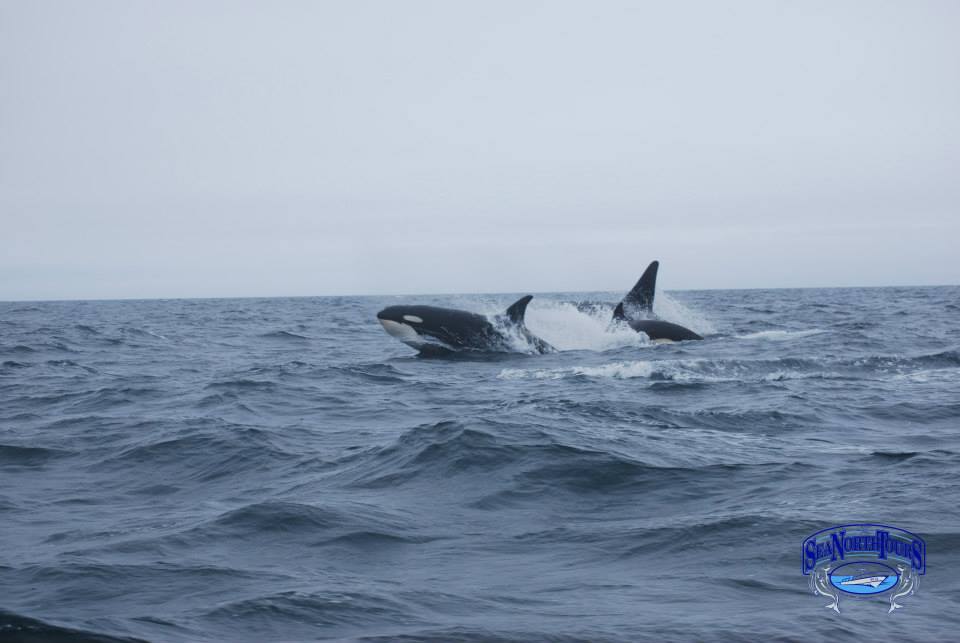
Orca’s in the Hudson Bay. Dwight Allen photo.
Come to the north and Churchill to see these amazing animals with Natural Habitat Adventures! Visit nathab.com for information.
by Steve Selden | Dec 11, 2014 | Videos
The Arctic fox is primarily a carnivore that lives inland, away from coasts. However, in recent years we have seen a notable increase in numbers spotted along coastal areas and out on developing sea ice.
Lemmings constitute the main diet of the animal though they also prey on seabirds and their eggs as well as various marine life along the coast. The lemming population tends to exist on a wavering scale from season to season. With those fluctuations we also see yearly changes within the population of Arctic fox in the Churchill region. When the rodent population decreases, foxes head out onto the Hudson Bay pack ice and survive on seal or other marine kills from polar bears. One can clearly see how the delicate web of life in the Arctic is reliant on opportunistic principles of survival.
Want to see these majestic creatures and polar bears in the wild? Visit nathab.com to see how.
by Steve Selden | Nov 28, 2014 | Churchill Photography
Now that the polar bears have headed out onto the ice-pack of the Hudson Bay, here are some parting shots from this polar bear season by Natural Habitat guides. This was one of the best seasons in a long time with numerous sows and cubs, sparring males and Arctic fox galore. Many other various sightings of wildlife as well as some true Arctic weather made this a very memorable season. Up next…aurora borealis trips at the end of January and going through most of March. Can’t wait for the images of northern lights!
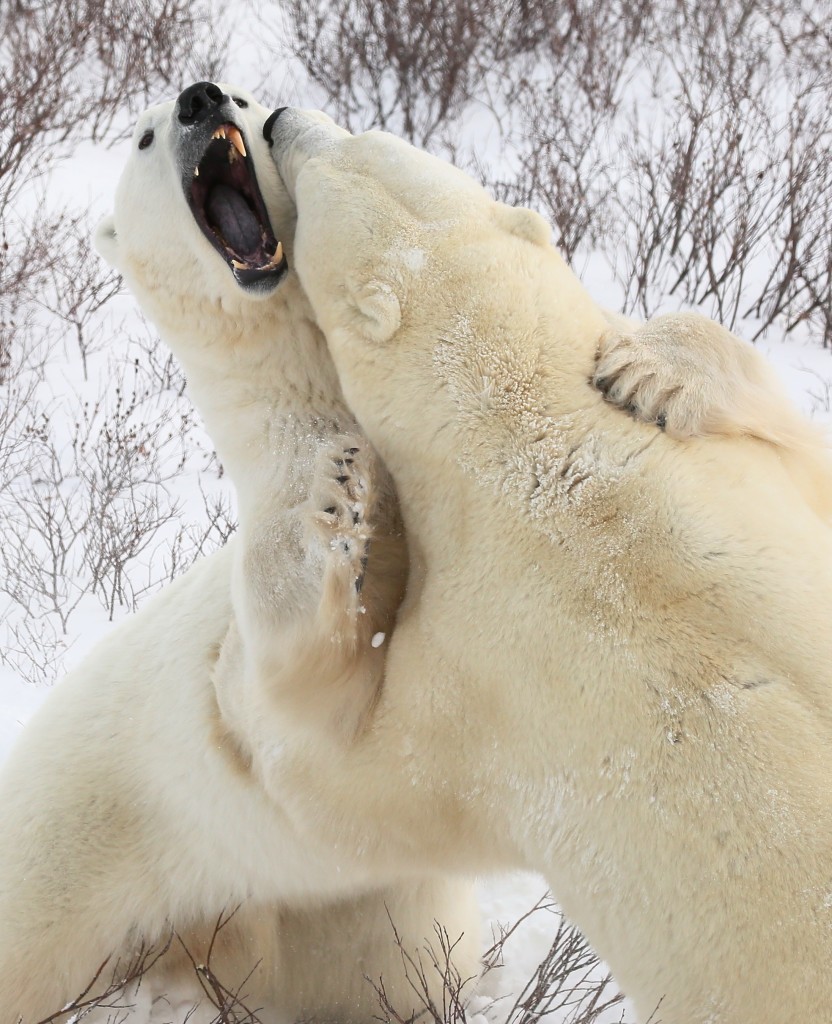
Two polar bears sparring in Churchill, Manitoba. Melissa Scott photo.

Aurora in the northern Churchill sky. Brad Josephs photo.
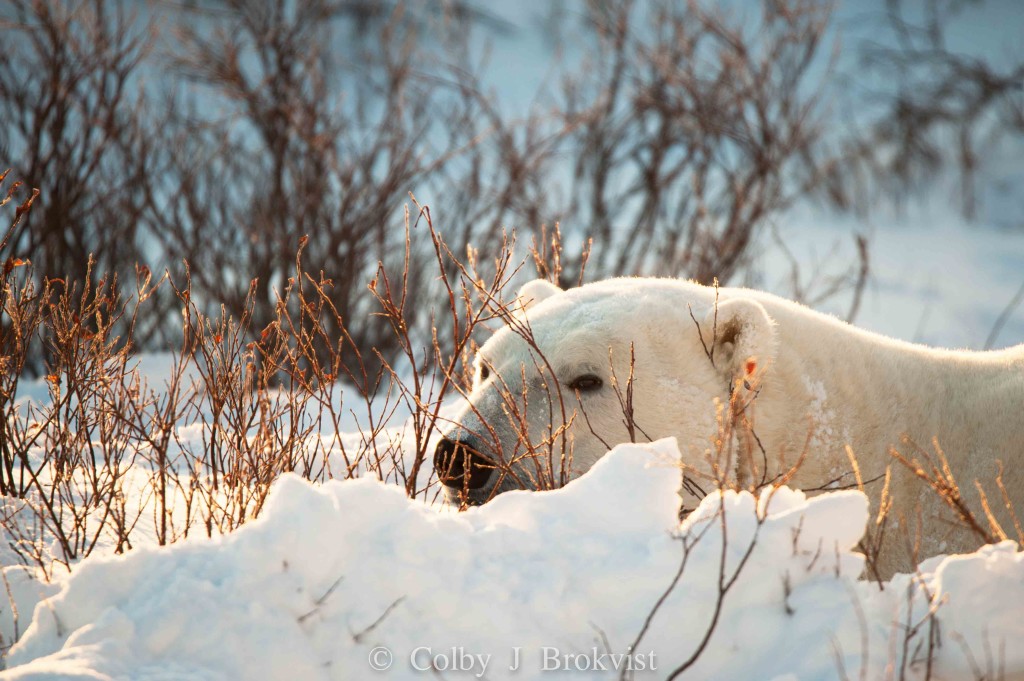
Polar bear resting in a snowbank. Colby Brokvist photo.

Polar bear sniffing around the polar rover. Brad Josephs photo.

Polar bear print in the snow. Karen Walker photo.
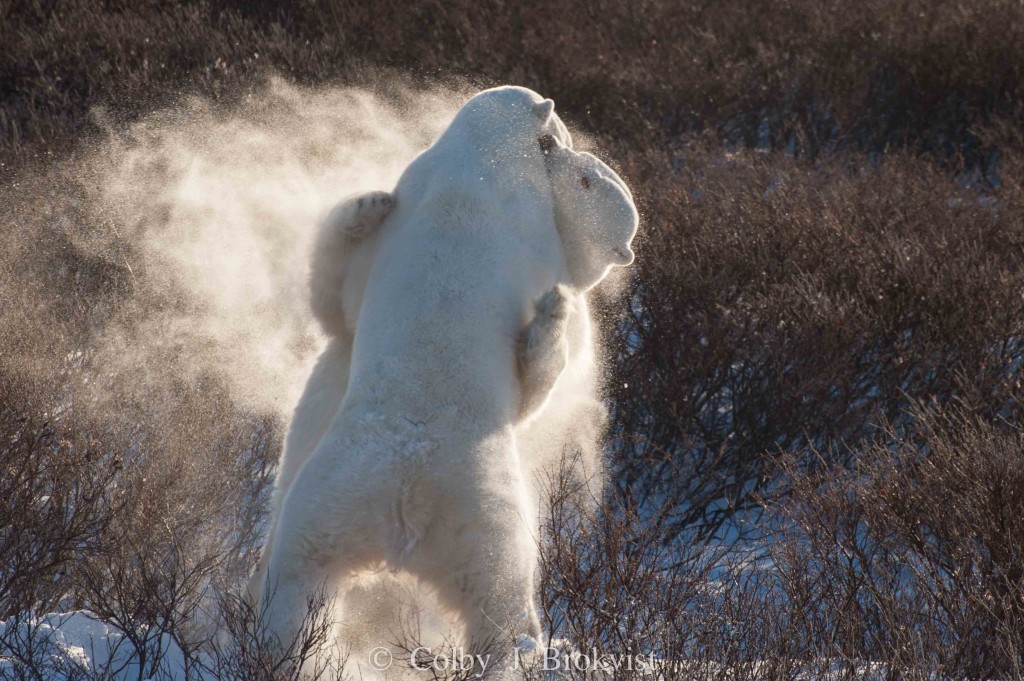
Polar bears grapple in the willows. Colby Brokvist photo.
by Steve Selden | Nov 5, 2014 | Tour News
Another great week of wildlife, and particularly, polar bear viewing in Churchill, MB with Natural Habitat and guide Colby Brokvist.
Slightly warmer air temperatures made for a bit more action out in the Churchill Wildlife Management Area. A sow and two coy were entertaining the group of travelers for hours and then amazingly the cubs even sparred with each other for a short time. A full day with the family provided thrills for the folks on the polar rover.

Polar bears in sparring mode. Colby Brokvist photo.
The following day Colby and group started off watching conservation officers tranquilize a large, skinny male bear out near the old dump close to what used to be the incineration plant. The groggy bear took two minutes to fall, and was then loaded on the truck and brought to the polar bear compound. Pretty thrilling to witness that live.

Polar bear in the CWMA. Colby Brokvist photo.
Out on the tundra of the CWMA, the travelers encountered Arctic fox, snowy owl, and some big male bears sparring at the lodge. “One large adult male came right up on our rover and I was excited to recognize his facial scar pattern as one who had been out at the Tundra lodge with me for several weeks a few seasons ago” reported Colby. ” I haven’t seen him since, so it was a memorable moment for me.” Another great day out on the land.

Two coy frolick in the willows. Colby Brokvist photo.
The group topped off the trip with a polar bear lift just before flying home. Natural Habitat sponsored the flight in support of the conservation and management program here in Churchill.




















